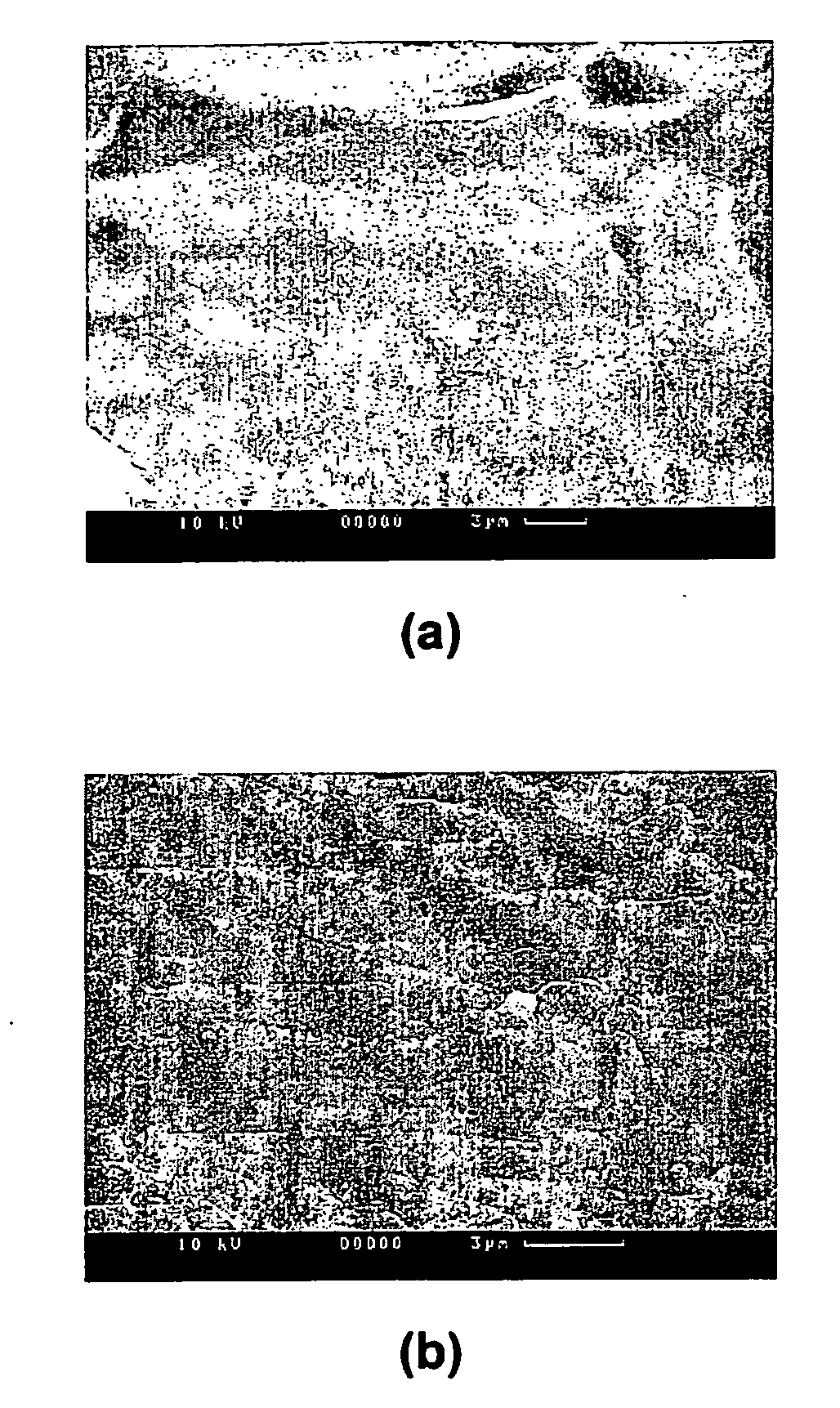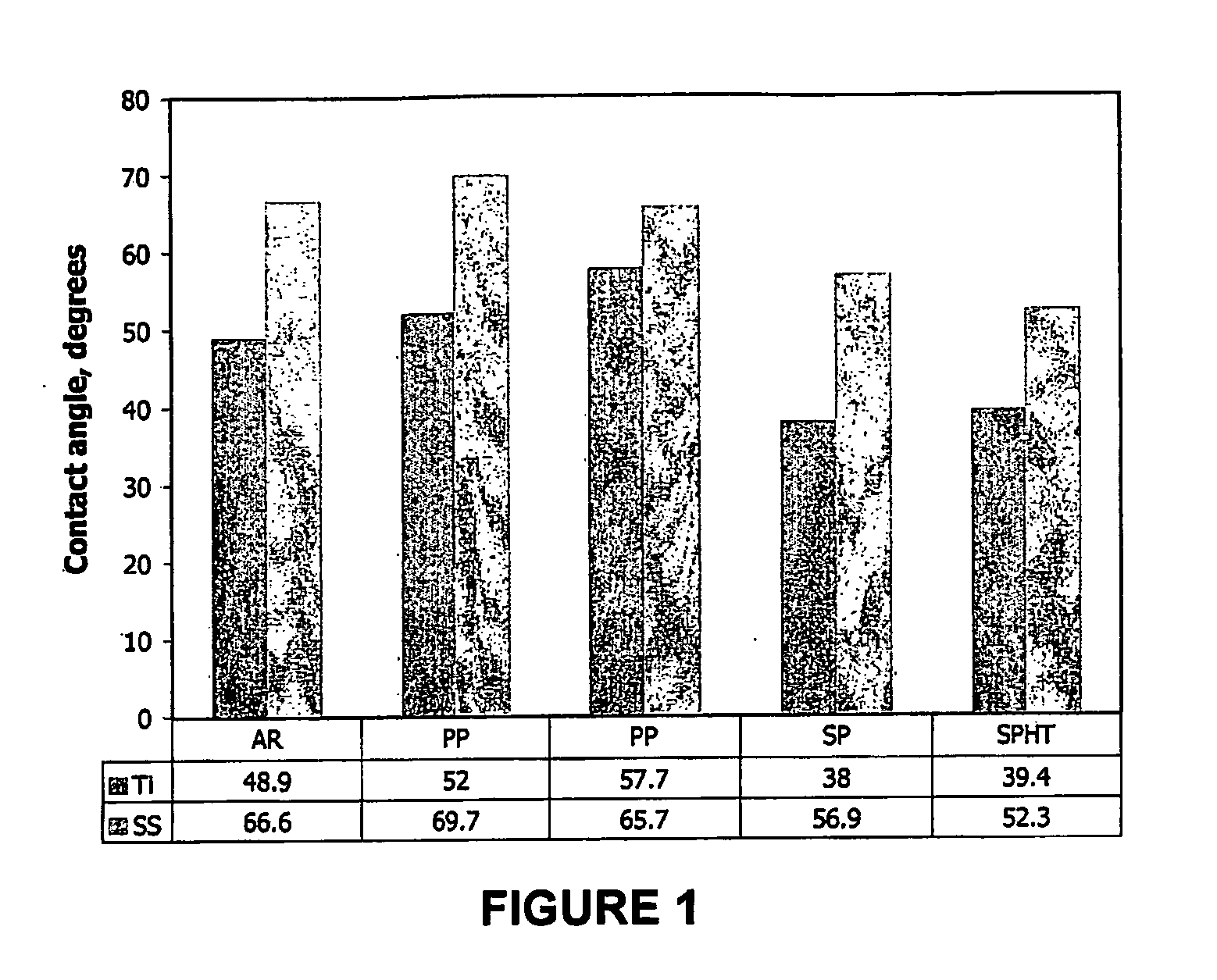Bioactive Coating of Biomedical Implants
a bioactive coating and implant technology, applied in the field of bioactive coating of biomedical implants, can solve the problems of metal surface providing a relatively poor interface for bone or other tissue attachment, propensity for the coating to erode or detach from the metal implant substrate, etc., and achieves the effect of promoting bone regrowth and attachment, and high silanol group density
- Summary
- Abstract
- Description
- Claims
- Application Information
AI Technical Summary
Benefits of technology
Problems solved by technology
Method used
Image
Examples
example 1
Treatment of Implant Substrates with Plasma containing a Reactive Hydroxylating Oxidant Species
[0070]Commercially available titanium or stainless steel self-tapping cortex screws, 3.5 mm diameter and 30 mm long were treated using the methods of the invention and were compared with untreated samples and also with samples that had been treated using published methods. Brief sample preparation details are:[0071]AR (As-Received) samples: titanium and stainless steel screws as-received, in polyethylene bags.[0072]PP (Plasma Processed) samples: Using the methods of the present invention, the samples were subjected to a two-step plasma treatment using H2O2 as the reactive hydroxylating oxidant species (5 min air plasma, followed by 5 min air / 30% H2O2 plasma). The system used to prepare these samples was a Harrick radio frequency plasma unit (model PDC-32G). The flow rates of air were controlled by using two mass flow controllers (MFCs). The flow rate range of the MFCs was 2-100 sccm based ...
example 2
Treatment of Implant Substrates with Organosilanes Followed by Plasma Treatment with a Reactive Hydoxylating Oxidant Species
[0094]Titanium sheet (99.7% purity) and tetraethoxysilane (TEOS) (98% purity) were purchased from Aldrich Chemical Co. and hydrogen peroxide (H2O2) 30% (Univar) analytical reagent was obtained from APS Finechem (Australia). The titanium substrates were prepared by cuffing the 0.25 mm thick sheet into 10×10 mm2 pieces. Prior to plasma deposition, the metal pieces were rinsed in 5 wt. % KOH solution followed by a Milli-Q water wash, then immersed in a warm solution containing 1.6 wt. % HF, 33 wt % HNO3 for 2-3 min followed by copious Milli-Q water rinse.
[0095]As mentioned above, the technique of plasma assisted chemical vapour deposition (PACVD) was employed for preparing thin-film coatings of hydroxylated silica onto titanium substrates. The configuration and use of a PACVD apparatus is known to a person skilled in the art. A radio frequency (13.56 MHz) plasma r...
PUM
| Property | Measurement | Unit |
|---|---|---|
| pressure | aaaaa | aaaaa |
| thickness | aaaaa | aaaaa |
| thickness | aaaaa | aaaaa |
Abstract
Description
Claims
Application Information
 Login to View More
Login to View More - R&D
- Intellectual Property
- Life Sciences
- Materials
- Tech Scout
- Unparalleled Data Quality
- Higher Quality Content
- 60% Fewer Hallucinations
Browse by: Latest US Patents, China's latest patents, Technical Efficacy Thesaurus, Application Domain, Technology Topic, Popular Technical Reports.
© 2025 PatSnap. All rights reserved.Legal|Privacy policy|Modern Slavery Act Transparency Statement|Sitemap|About US| Contact US: help@patsnap.com



